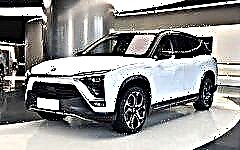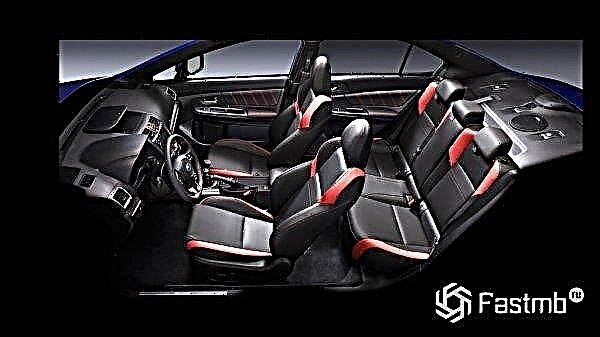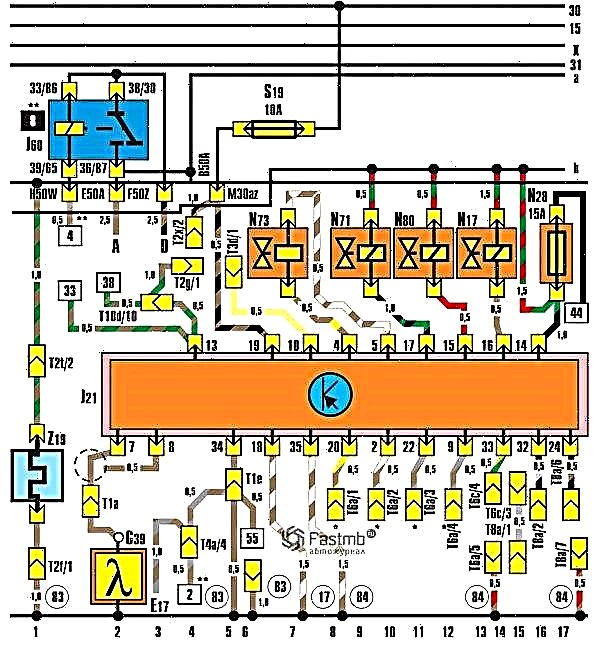
The content of the article:
- Types of car TVs
- Criterias of choice
- Screen
- Sound
- Control systems
- Fastening
- Antenna
- Comparative characteristics
- Traffic safety
The presence of a TV in the car is not a necessity, it does not affect the technical characteristics and does not add prestige. But for car owners who are forced to spend many hours behind the wheel in traffic jams or make many kilometers of crossings, the TV will make the trip much more comfortable.
Automotive electronics stores offer a huge selection of car TVs that differ in design, functionality, cost and other parameters.
The buyer may be confused by such an assortment, fearing to make mistakes and purchase inconvenient and low-quality equipment.
Summing up, it should be admitted that the entertainment purpose of the TV every year is increasingly expanding to a very functional car device.
Types of car TVs and specifications

All the variety of techniques of this type is conventionally divided into two large groups:
- Portable. They are capable of operating from a regular 220 volt outlet, from a 12 volt car cigarette lighter, as well as from a built-in battery, which allows broadcasting up to 2-3 hours of continuous playback. They are equipped with a tilt-and-turn mechanism to mount the TV to the vehicle ceiling or dashboard.
- Stationary. They are connected to the vehicle's electrical network and integrated into the interior - in the headrest, ceiling, sun visor. These TVs have all the necessary devices: display, sound system, antenna, TV tuner and DVD player.
In order to correctly choose a model, the car owner should determine for himself the future purpose of the TV: for watching in traffic jams, for background noise, for himself, for passengers. This will determine the optimal type of device, the quality and volume of sound, the quality of image transmission, related parts and the appropriate place for it.
Criteria for choosing a TV in a car
Screen

Important characteristics of the car TV screen:
- Permission. A car TV is not much different from an ordinary home TV, so the same simple principle works here - the higher the resolution, the clearer the image;
- Diagonal. The choice of the diagonal size directly depends on the size of the car interior. In cars, it is worth purchasing models no more than 7-22 inches; in a large car, you can swing on a 40-inch TV;
- Geometry. Large-format screens are perceived by the viewer much more comfortably, so now the films and TV shows being released are oriented mainly towards this type of monitors, although there are quite a few “old” formats on sale;
- Matrix. The liquid crystal screen should be checked for the absence of extinct dotted areas or, conversely, constantly glowing. That is, to look for the so-called "broken pixels";
- Viewing angle. As practice shows, the best viewing angle is achieved at 110 degrees horizontally and 50 degrees vertically;
- Brightness, contrast. No matter what time of day the driver turns on the TV, it should not interfere and distract from concentration on the road. Therefore, high-quality equipment should be able to adapt to different levels of illumination, and therefore, have the function of adjusting brightness and contrast.
Sound
Even when buying, you need to check the TV for sound quality. Typically, car TVs are equipped with one or two speakers with an average power of 0.5W. They will offer very average sound quality, but sufficient to create background noise. If the car owner wants to achieve better sound, you should choose a technique that has the ability to connect an external amplifier.
Control system

Button control, of course, is still present in many TV models, but it is in the context of an automobile purpose that it is very inconvenient, forcing the driver to be distracted from the road. Techniques controlled by a remote control or a voice are much more effective.
When choosing different models, you should work with the interface to determine how clear and easy it is to operate. Then, while on the road, you do not have to look for instructions and try to deal with the gadget on the go.
Fastening
The installation location of the car TV should be assigned even before purchasing it, because the fasteners for the torpedo, visor or headrest will differ significantly. Thinking about the place for mounting, you need to take into account that, ideally, a comfortable distance for watching TV is equal to four monitor diagonals.
Antenna

Each car TV model is initially equipped with an antenna designed for urban areas. It perfectly picks up the signal from the television tower, receiving interference only due to the movement of the car. But as soon as you leave the city limits, the opportunity to watch TV programs completely stops.
If the car owner plans to watch not only films recorded on the media, but also standard TV broadcasting, he will need an additional antenna with an amplifier.
Several types of antennas are suitable for a car:
- pin stationary for fastening inside the car to the front or rear glass;
- similar, but for fastening outside the car to the side or rear window, fender, roof;
- mesh, which are installed inside the cabin on the rear window;
- pin electromechanical, mounted to the rear fender.
Comparative characteristics of car TVs

All car TVs on the market can be conditionally divided into economical models, optimal middle level and premium class.
The budget category of automotive equipment includes models:
- Prology;
- Supra;
- Rolsen;
- Miyota;
- Mystery.
These are compact TVs with different mounting methods. The standard kit includes headphones, remote control, FM-receiver, optionally, it is possible to install simple electronic games like "Tetris". Basically, these are large-format models, in which it is possible to choose the 4/3 format that has gone down in history.
Based on the price-quality ratio, SUPRA is the leader in the presented group of products, offering models with large diagonals, 16/9 format and an acceptable cost in the range of 7-8 thousand rubles.
The category of "middle peasants" includes:
- Elekta;
- Alpine;
- Vitek;
- Casio.
For the most part, they produce more demanded broad-format technology that reproduces all modern content. The screen resolution exceeds the capabilities of budget models, making the picture significantly more accurate and realistic.
Of the models presented, you should pay attention to the Alpine brand, which also has a digital tuner and a decent price tag of 20-24 thousand rubles.
Televisions for business cars, government vehicles, and ceremonial vehicles must have maximum performance. Television equipment worth more than 25 thousand rubles falls into this category:
- Clayton;
- Prology;
- Elson.
The quality of even an 8 "Prology TV is quite comparable to some home TVs. Equipment in this subgroup has improved resolution and clarity, support for all playback formats, and is additionally equipped with a clock, timer, navigator, satellite system and even a computer.This is exactly what a luxury car TV should be - as stylish and harmonious as the car itself.
Traffic safety with car TV

Installation of a TV in the passenger compartment of a car is not prohibited by itself, but requirements are imposed on it, similar to the requirements for cargo transported in the cabin. Thus, it should not interfere with the driver's driving, providing sufficient visibility.
Although this is not regulated by law, every car owner should understand the dangers of watching TV while driving. This is a very serious distraction that can lead to an accident. TV can be watched either in a long traffic jam, or used as a replacement for the radio, or while idle, for example, in the case of working as a taxi driver.
Of course, on a long journey, a car TV will be a very useful device, especially for drivers with children, who will have something to entertain on a tiring trip.











